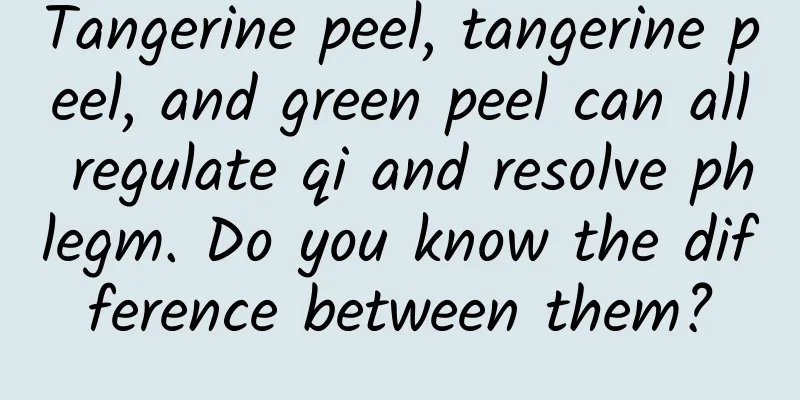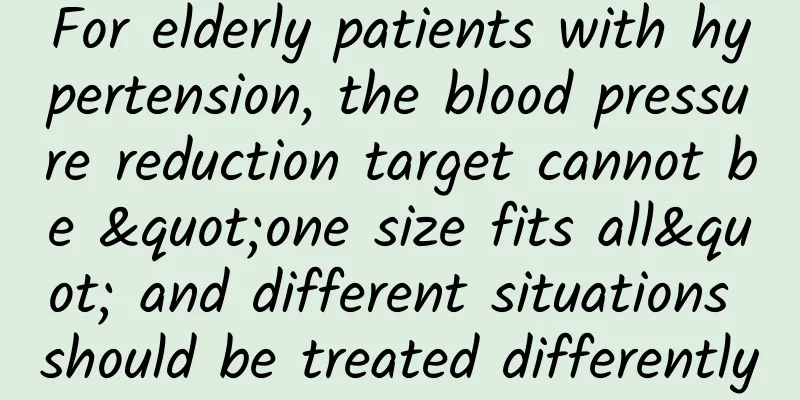Vitamin C can fight cancer? This is not a rumor in the circle of friends!

|
Author: Han Xiao (Beijing Institute of Genomics, Chinese Academy of Sciences) The article comes from the Science Academy official account (ID: kexuedayuan) Recently, a piece of news that "Vitamin C can be used as a potential small molecule for differentiation therapy of renal cancer" shocked the public. What? Eating an orange can help treat renal cancer? What exactly is vitamin C capable of? Vitamin C: A Gift This starts with the inherent advantages of vitamin C (Vitamin C, hereinafter referred to as Vc). Vc is an essential nutrient in our daily life. Fresh dates, kiwis, grapefruits, green peppers, tomatoes, strawberries, cucumbers, citrus fruits, etc. are rich in Vc. It can enhance the body's immune function, anti-oxidation, and also has beauty effects~ Chemical formula of vitamin C (Source: Internet) In 1970, Nobel Prize winner and biochemist Linus Pauling published an article claiming that vitamin C can be used to prevent and treat cancer. After that, many people stood up to doubt the extraordinary gift of vitamin C, and it was once at the center of controversy. However, the research on the relationship between vitamin C and tumors has never stopped. According to existing research, the main reason why Vitamin C can inhibit tumor cells is that it produces reactive oxygen species (ROS) through redox reactions, which in turn kill cancer cells. In clinical trials, this can be achieved by giving patients high-dose intravenous injections, while it is difficult to achieve the same blood drug concentration through simple oral administration. This is also the reason why Pauling was able to propose the idea of Vitamin C's anti-tumor effect in the beginning but was unable to reproduce it in subsequent studies. Existing studies on vitamin C anti-tumor are mainly based on direct killing of cancer cells, which is essentially no different from radiotherapy, chemotherapy, and later tumor targeted therapy. So, is there a way to "tame" cancer cells and weaken their malignant phenotype instead of directly killing them? The research that Dayuaner wants to introduce to you today can be said to have opened the door to a new world. Low-dose vitamin C may fight kidney cancer! We know that cancer patients lack vitamin C. Therefore, scientists used Vc and Vc derivative magnesium phosphate (this derivative is more stable) at physiological concentrations (the plasma concentration of Vc in healthy people is about 100μM) to treat renal cancer cell lines and found that the activity of a DNA demethylation enzyme Tets in the cells increased, thereby increasing the level of 5-hydroxymethylcytosine (5hmC), a modification on DNA, and this low-dose treatment inhibited the growth and migration of tumor cells to a certain extent! What tricks did Vc use to successfully fight kidney cancer? It turns out that in clear renal cell carcinoma, 5hmC in tumor cells is generally downregulated compared with normal cells, which is closely related to the poor prognosis of patients. Tets enzyme can oxidize 5mC to produce 5hmC, and low-dose Vc long-term continuous treatment can increase the activity of Tets enzyme, bring more 5hmC modifications to DNA, reprogram its epigenetic, and reduce the malignancy of tumors. At the same time, this low-dose treatment method has little toxic side effects on cells. So, does this method work in vivo? In subsequent animal experiments, scientists found that the same results could be obtained in nude mouse transplanted tumors (tumors artificially transplanted on immunodeficient mice) and primary cultured cells of primary clear renal cell carcinoma patients: 5hmC levels increased and the malignancy of tumor cells decreased. Schematic diagram of vitamin C inhibiting tumors (Source: Restoration of 5-hydroxymethylcytosine by ascorbate reduces kidney tumour growth) Vitamin C's anti-cancer secrets: epigenetic and transcriptional reprogramming Of course, in addition to such obvious and gratifying results in the experiment, scientists also integrated and analyzed the sequencing data. Methylated DNA Immunoprecipitation Sequencing (hMeDIP-seq) is used to detect DNA 5hmC levels; H3K27ac chromatin immunoprecipitation technology (Chromatin Immunoprecipitation, ChIP-seq) is used to identify super enhancers that can significantly improve gene expression. Super enhancers are a series of regulatory sequences on DNA. With it, the corresponding genes will be abnormally activated and efficiently transcribed. By analyzing the hMeDIP-seq data of renal cancer cell lines treated with Vc and its derivatives at physiological concentrations, scientists can clearly find the epigenetic reprogramming pattern of DNA 5hmC, which is more similar to healthy cells. After treatment with Vc, the 5hmC pattern of renal cancer cells is closer to the 5hmC distribution of normal tissue cells (Source: Restoration of 5-hydroxymethylcytosine by ascorbate reduces kidney tumour growth) So, where this 5hmC appears will make it easier to relieve the symptoms of kidney cancer? Further verification through ChIP-seq sequencing found that in kidney cancer cells treated with Vc and its derivatives for a long time, the 5hmC up-regulated areas mainly appeared in the enhancer region, especially the super enhancers related to kidney tissue. The genes regulated by these super enhancers are mainly concentrated in the HIF signaling pathway, which is closely related to the occurrence of renal clear cell carcinoma. In other words, Vc may regulate the super enhancers related to kidney tissue through changes in 5hmC modification to play an anti-cancer role. Changes in DNA 5hmC modification ultimately caused changes in gene expression. Through the results of these data analysis, we can find that Vc and its derivatives can induce 5hmC reprogramming in renal cancer cells and change the differentiation state of renal cancer cells. In general, Vc returns renal cancer cells to their original state, preventing them from being unruly and causing harm everywhere. Future Outlook This extremely meaningful study confirmed for the first time in renal cancer cells that Vc can increase the level of 5hmC by promoting the activity of Tets enzyme, reprogramming DNA to a "normal" state, thereby reversing the malignant phenotype of renal cancer cells and exerting an anti-tumor effect. This discovery not only provides new ideas and potential new strategies for the treatment of renal cancer, but also provides the latest basis for the important role of epigenetics in tumor treatment. This achievement was completed by the research group of Ci Weimin from the Beijing Genomics Institute of the Chinese Academy of Sciences and the research group of Zhou Liqun from Peking University First Hospital, and was published online in the journal EMBO Reports under the title "Restoration of 5-hydroxymethylcytosine by ascorbate reduces kidney tumour growth". At present, the research has been patented, and a prospective study on the treatment of clear renal cell carcinoma with Vc combined with targeted drugs has been launched in the cooperative unit, showing a favorable prospect for the use of Vc and its derivatives in future clinical treatments, either alone or in combination with targeted treatments for clear renal cell carcinoma. |
<<: How to protect against cold weather?
Recommend
Is stomach pain normal during pregnancy?
Women are more likely to get sick during pregnanc...
There is really a best age to quit smoking! Quitting before this age can reduce the risk of death by more than a little
In life, have you ever heard such a saying: "...
How long is it normal to delay your period?
Menstruation is a very important physiological ph...
Why is the third day of menstruation the most painful?
In daily life, many women are affected by menstru...
What kind of tea is Jin Jun Mei? Can Jin Jun Mei be put in the refrigerator?
Jin Jun Mei is a high-end black tea, different fr...
Can I eat sand apples during menstruation?
Menstruation is a special day for every woman. Du...
How to improve leg cramps in late pregnancy
Leg cramps, foot cramps, and abdominal cramps are...
What should women do if they lack blood?
In the past, it was generally advocated that men ...
Festival Knowledge | May the Double Ninth Festival be auspicious every year
The ancients defined "nine" as a "...
Colorectal cancer—a disease related to eating, do you know?
This is the 3504th article of Da Yi Xiao Hu Many ...
What is the significance of archaeology? What new discoveries have been made in Chinese archaeology?
As one of the ancient civilizations in the world,...
How to deal with a woman's beer belly
Women in society have a high status. Some women h...
Four ways to become a special woman
1. Avoid becoming a victim of fashion There will ...
How long does it take for a woman to not have her period before she is considered to have amenorrhea?
Everyone is familiar with women's menstruatio...









